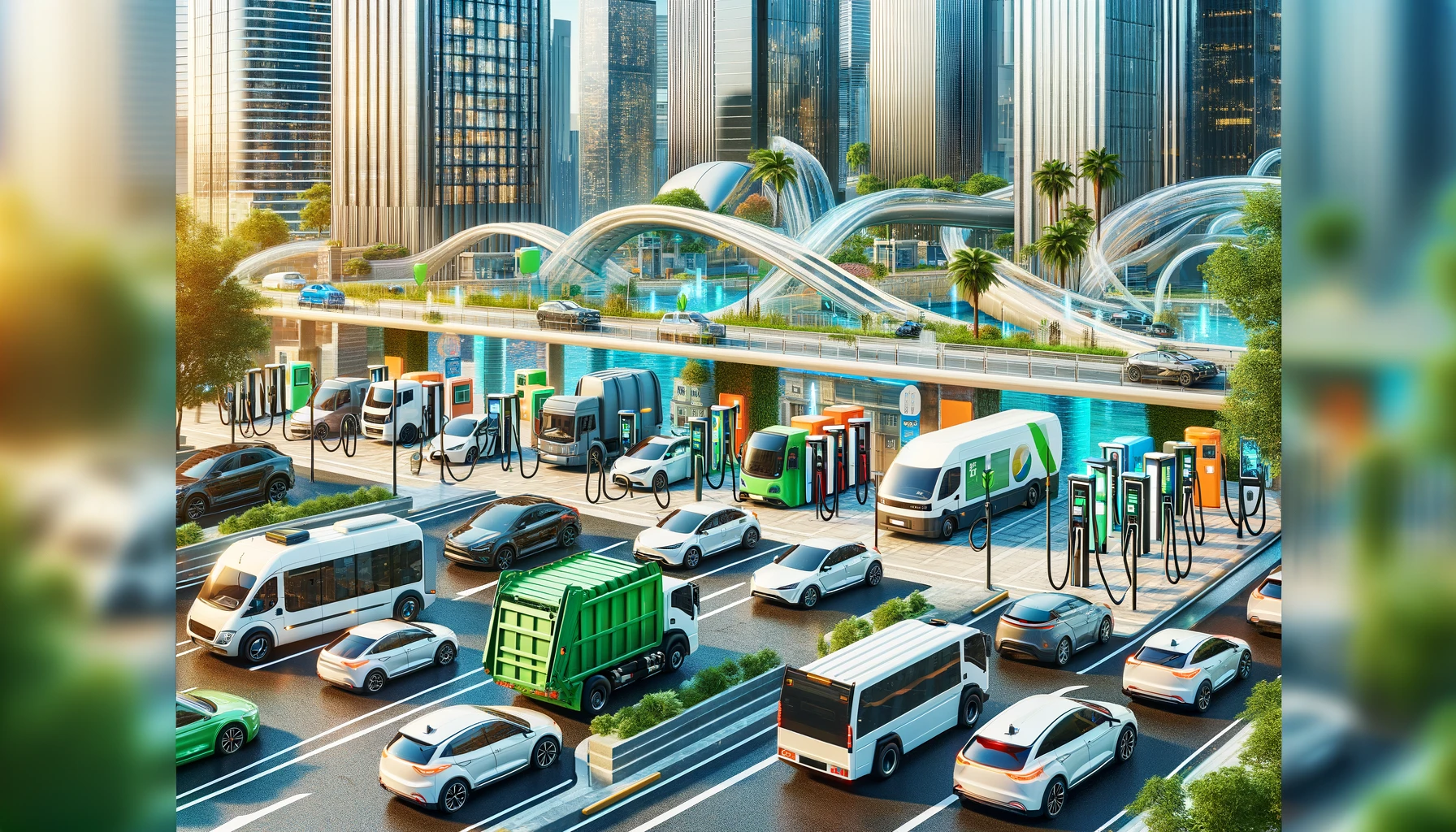
- 296 views
By clercity24
Municipal fleets are the backbone of city services, including public transit, parking, waste collection, and maintenance activities. As cities become more environmentally conscious, the transition from traditional internal combustion engine vehicles to electric vehicles (EVs) within these fleets is accelerating. This shift not only promises significant reductions in greenhouse gas emissions but also offers a cleaner, quieter urban environment. However, transitioning to an electric fleet poses unique challenges, particularly regarding the development and management of effective EV charging infrastructure. Here’s a comprehensive guide to setting up a successful municipal fleet charging system.
Understanding the Needs of Electric Municipal Fleets
Before diving into the installation of charging stations, it’s crucial for city planners and fleet managers to assess the specific needs of their fleets. This involves considering the types of vehicles, their range requirements, operational schedules, and the logistics of where and when the vehicles will be charged. Factors such as vehicle downtime (when vehicles are not in use) should be aligned with charging times to maximize efficiency and vehicle availability.
Site Selection
Choosing the right locations for charging stations is critical. For municipal fleets, stations should ideally be located at vehicle depots, municipal buildings, and other secure areas that are accessible only to fleet vehicles. It’s essential to consider the space available for installing chargers and ensuring there is adequate electrical capacity at those sites. Cities can also utilize additional charging infrastructure dedicated to fleets such as Cler charging hubs. They set up charging hubs at key locations to support commercial fleet charging.
Charger Type and Capacity
Deciding between Level 2 chargers and DC fast chargers is a key decision point. Level 2 chargers, which typically provide about 20-30 miles of range per hour of charging, are suitable for vehicles that can be parked overnight. In contrast, DC fast chargers are better for vehicles that need to be quickly turned around during the day, as they can charge an EV up to 80% in just 30 minutes. Overnight Level 2 charging is better for the battery in the long term, and can save money on energy costs when charging during off-peak hours.
Energy Management
Implementing smart charging systems helps manage the load on the electrical grid and optimizes energy use. Such systems can stagger charging times to avoid peak energy rates and reduce the operational costs associated with powering an electric fleet. Consider software providers like Port Power to help you manage your EV chargers, power, and reduce charging costs.
Financial Considerations
Transitioning to electric vehicles and the necessary charging infrastructure can be costly, so it’s important to explore funding opportunities. Many governments offer grants, incentives, and rebates to support the adoption of EVs in public fleets. Additionally, calculating the total cost of ownership over the vehicle’s lifespan—including reduced fuel costs and lower maintenance expenses compared to combustion engines—can justify the initial investment. As an alternative to ownership cities may want to consider an all inclusive solution like Cler Electric Fleet. They offer commercial electric vehicles, EV chargers, maintenance, and telematics for one predictable monthly fee.
Technological Integration
Integrating advanced technologies can significantly enhance the efficiency of electric fleets. Fleet management software and telematics can track vehicle usage patterns, monitor battery health, and manage charging schedules. Moreover, integrating renewable energy sources, like solar panels, into charging infrastructure can further reduce the carbon footprint and operational costs.
Community Engagement and Policy Support
Successful implementation of a municipal EV fleet requires community engagement and supportive policies. Public acceptance is often influenced by awareness campaigns that highlight the environmental and economic benefits of electric vehicles. Meanwhile, policies that streamline the process of installing charging infrastructure or that mandate a certain percentage of new fleet purchases to be electric can accelerate fleet electrification.
Looking Ahead
As technology progresses and more cities adopt electric vehicles, the experiences and data collected from early adopters will become invaluable in shaping future strategies. Continuous improvement in battery technology, charging solutions, and vehicle efficiency will likely make electrification increasingly feasible for even the largest of municipal fleets.
Municipal fleet electrification is a critical component of urban environmental sustainability strategies. By carefully planning charging infrastructure, exploring financial incentives, and integrating cutting-edge technologies, cities can lead by example in the transition to a more sustainable future. As we look forward, the move to electric fleets represents not just a technological shift, but a fundamental change in how cities manage their transportation ecosystems for the benefit of all.
Consider Cler Electric Fleet
Cler offers an All-Inclusive Electric Fleet Solution: eVehicles + Chargers + Maintenance + Telematics. The holistic electric fleet solution integrates electric cargo and passenger vehicles with EV chargers. Cler optimized the fleet electrification process to save businesses time and money while meeting regulatory requirements. With Cler’s turn-key approach, there’s no need for upfront capital investment or ongoing maintenance costs.